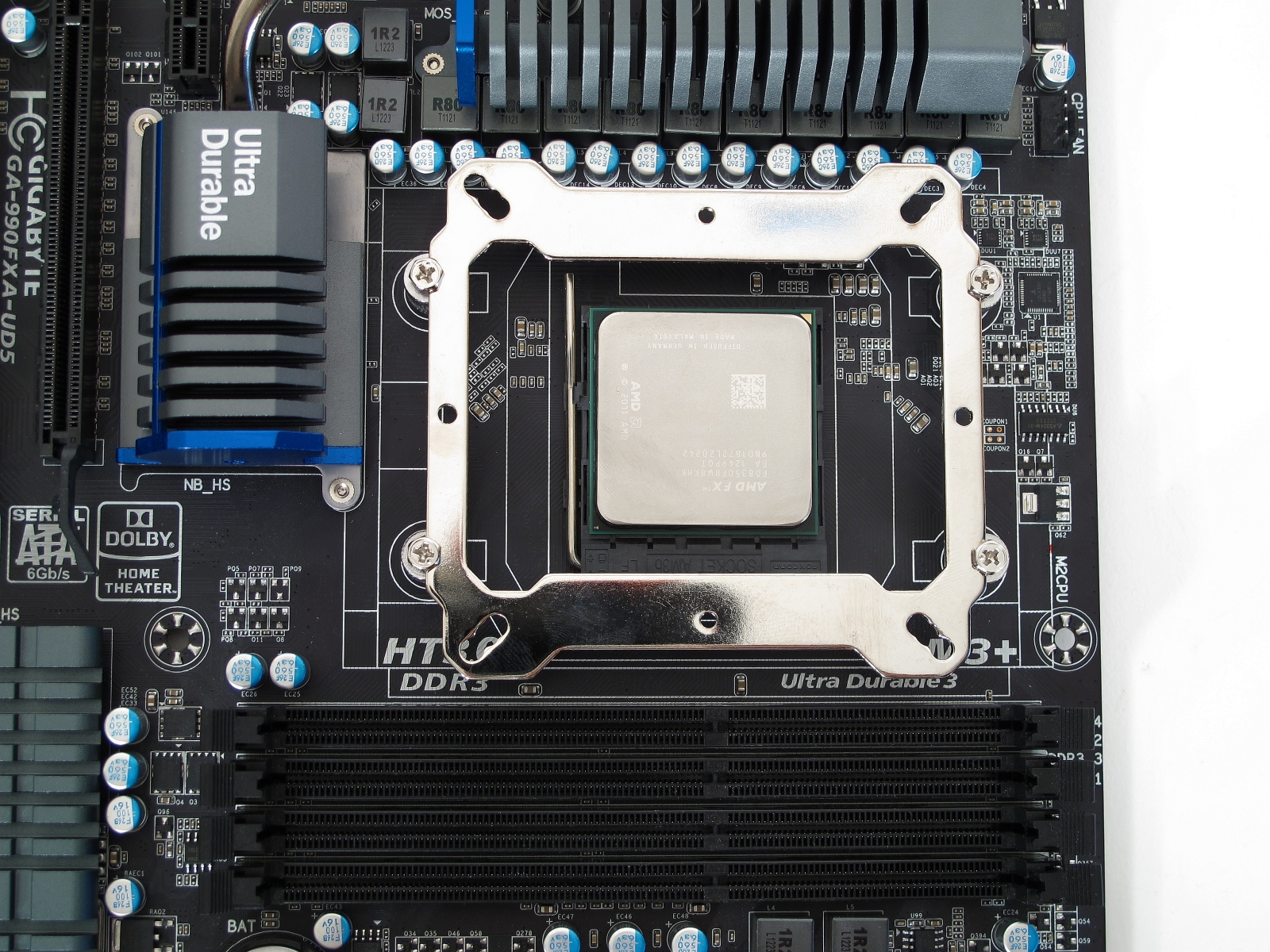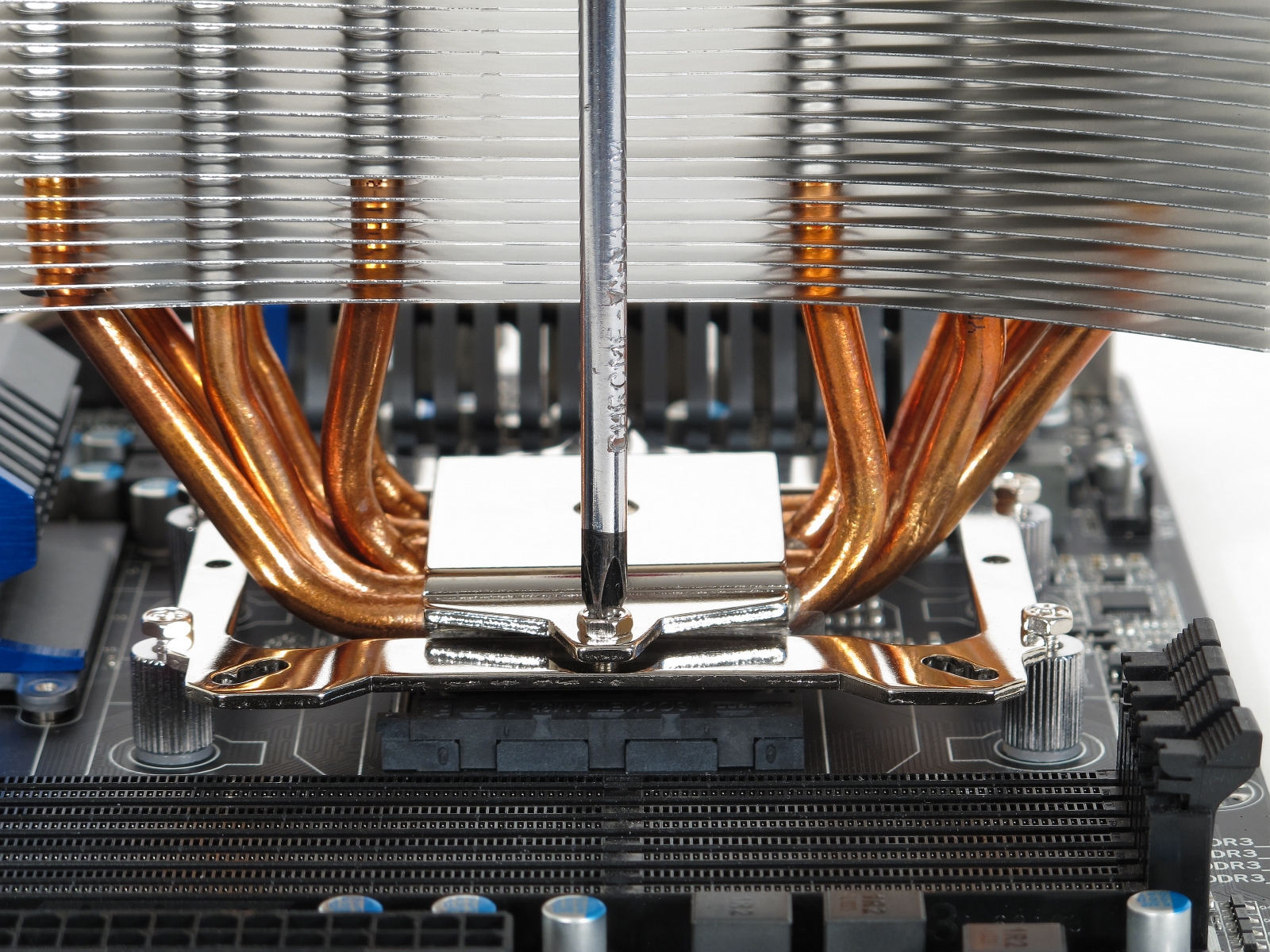Three Thermalright True Spirit Heat Sinks, Reviewed
Thermalright sent over all three models in its True Spirit heat sink family, complete with 92, 120, and 140 mm fans. We dropped each one onto an FX-8350 processor to gauge its cooling performance and acoustic output. Which one takes the value win?
Installing Thermalright's True Spirit Family
Why you can trust Tom's Hardware
Again, the True Spirit line-up’s installation should be familiar if you've ever used one of Thermalright's Macho coolers. The parts are identical.
A universal back plate fits all current AMD and Intel processor interfaces, and serves as a solid base. If you're using a Socket 939-based AMD platform, you need to put a protective plastic cover on the back plate. Then, you attach screws with plastic spacers. After that, the back plate is mated to the motherboard from underneath.
The installation screws now stick out of the top of the motherboard. Next, you'll want to place four spacers with dual-sided internal threads over those screws. It’s important to install the spacers so that the rubberized side faces the motherboard, avoiding direct contact between the spacer’s metal surface and the board. The retention frame is then screwed onto the spacers.
Install the vibration-isolating rubber strips and fan retention clips before dropping the heat sink onto your motherboard, since certain spots are really difficult to reach once the cooler is in place. The True Spirit 90M and 120M(BW)’s fans are recessed a bit into the cooler’s fins and decoupled with thin rubber strips. The 140(BW) has rubber pads glued to the body of the cooler.
After applying the thermal paste, the cooler is put in place on top of the processor. Then, it's attached with a small installation plate, which is put on top of the cooler’s base plate.
In the case of Thermalright’s True Spirit line, it makes sense to follow the manufacturer’s instructions and apply thermal paste on both the CPU and cooler base for optimum results. Without enough thermal paste, you'll lose contact surface area between the processor's heat spreader and the cooler’s base plate. That's typically more problematic than too much.
A Few Words on Compatibility
We used Gigabyte's GA-990FXA-UD7 for testing. This board diverges from AMD’s reference design. Gigabyte moves the northbridge so that its heat sink is under the VRM's passive cooler. This placement results in installation problems because the CPU heat sink collides with its retention frame. The smaller Gigabyte motherboards (-UD5 and below) don’t have this issue. We’ll shave 1 to 2 mm off the motherboard's heat sink for future round-ups, which should be enough to eliminate the problem. For now, since all of the coolers utilize the same retention mechanism, we kept it simple and shaved 1 mm off of the retention plate.
Current page: Installing Thermalright's True Spirit Family
Prev Page Technical Specifications And Design Next Page Benchmark SystemGet Tom's Hardware's best news and in-depth reviews, straight to your inbox.
-
expl0itfinder I would love to see this compared against a wider selection of air coolers. For instance, the Cooler Master Hyper 212, or other fan favorites. Comparing it to 1 or 2 other brands does not give us a lot to look at.Reply -
Novuake A single other well known cooler for reference would have been great for easy context.Reply
Not all sites and reviews used Delta temps.
Nice review but kind of renders it moot for comparison out of the Silverstone and THermalright Scope. -
Someone Somewhere I think you got a bit lost on your graphs. At a guess, you meant to have one as distance from ambient, and one as absolute, or possibly there's idle readings.Reply
Also, please stick to the same units.
More comparisons would have been nice. -
SpadeM There are a few issues /omissions in the article, first being that the motherboard cap is only used on 939 sockets (i did an install for 970A-D3 AM3+ and it didn't require it) also the anchoring plate is flawed in my opinion because the screw holes that hold it in place aren't actually holes, but more live grooves on the outside of the plate and so the screws actually hold the plate in place with only half of their screw cap. And finally, for users that aren't experienced with multiple cpu heatsinks, tightening the final plate that locks the cooler in place ca very well damage your processor since there's no limiter in place.Reply
Other then that, those are some fantastic coolers, even though the thermal probe on FX-8350 under windows gives me flawed measurements in idle, under load it's quite good. -
iam2thecrowe 2000 rpm is noisy? i used to have a 6000rpm fan on my old athlon xp....... I think people these days are too picky about noise.Reply -
Someone Somewhere Reply11299459 said:2000 rpm is noisy? i used to have a 6000rpm fan on my old athlon xp....... I think people these days are too picky about noise.
Diameter has a lot to do with it - it's more to do with tip velocity than actual RPM. Your fan was likely about 40-50mm.
I've got 40mm fans that are near silent at 3K RPM. You can get 40mm fans that do 13K. -
ubercake Whether it's the motherboard or the heat sink manufacturers... We're still seeing 3rd-party CPU heat sinks and their fans blocking RAM slots for a decade. There's not much innovation going on here. I would tend to think the heat sink manufacturers need to accommodate the current motherboard designs. If they could solve that part of it in a full-size effective heat sink solution, innovation will have taken place. Until that time we'll keep seeing copper this; nickel-plated that; aluminum fins here; heat pipes there; one fan on this one; two fans on that.Reply
Same old stuff; different day. -
Myrkvidr @Someone Somwhere: Sorry, there's a copy&paste issue in the 2nd and 4th chart on page5: It should say "CPU temperature at 20°C ambient" while the 1st and 3rd chart are Delta temps.Reply
@SpadeM: Seems like I just did not RTFM close enough ;) But the measurement results were not affected by using or not using the plastic cap (I ran two separate measurement series). The anchoring plate is sitting very tight - I installed a lot of Thermalright heatsinks during the past couple of weeks. The contact pressure between the True Spirit heatsinks and the CPU is not excessively high, so it shouldn't cause any damage to the CPU.
@all: We just startet off with the new system for CPU cooler testing and had to start somewhere - there will be more results and coolers coming soon :)


